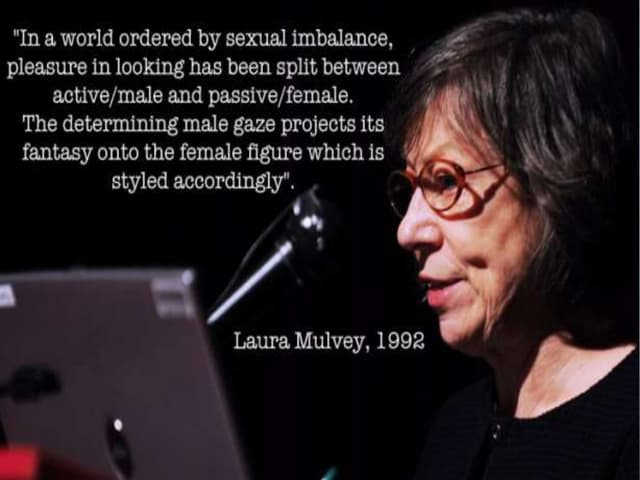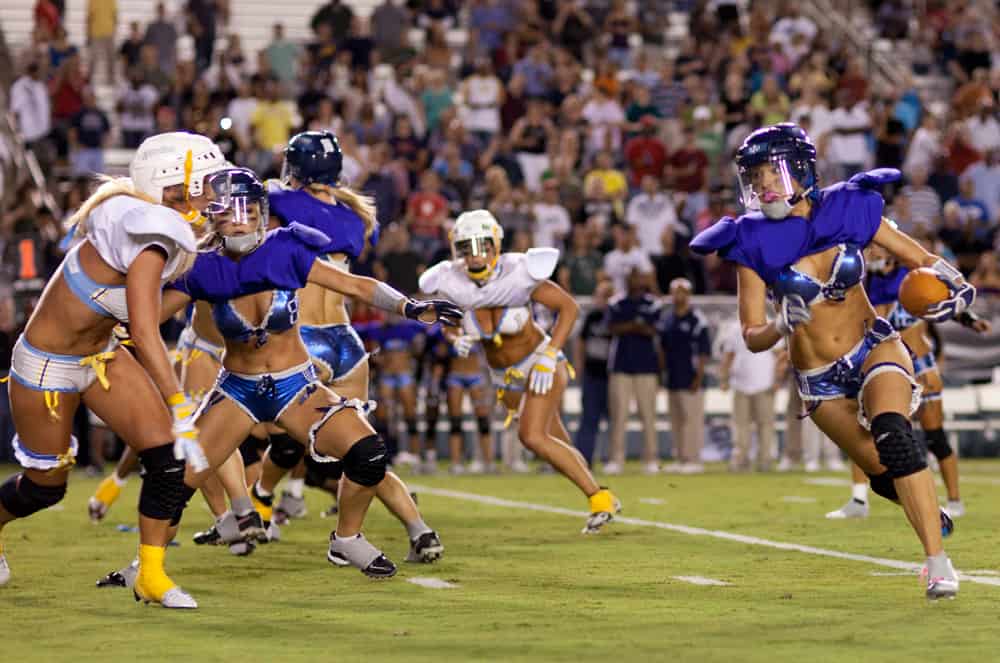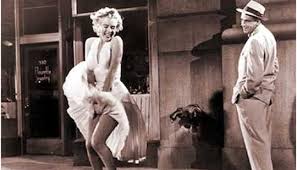The idea of the male gaze, introduced by Laura Mulvey, is still very much a part of todayŌĆÖs conversations about media representation, gender, and power dynamics. Scholars like Ashby et al. (2017) and McRobbie (2002) point out that the male gaze continues to influence how we see and understand masculinity and femininity.

What is the Male Gaze?
The concept of the male gaze describes a perspective that tends to focus on how men see the world, often leading to the objectification of women. It frames women as passive subjects for visual enjoyment. Fredrickson and Roberts’ (1997) objectification theory helps us understand how this portrayal can reduce women to just their physical appearance, which can hurt their experiences and mental well-being. In the media, we can see this in the way camera angles, stories, and marketing strategies often highlight male-centric ideals.
Contemporary Media and Masculinity
Ashby et al. (2017) share some important insights about how sports media often reflects the male gaze, which shapes our understanding of masculinity. In many portrayals, men are shown as strong and dominant, while women are often cast as passive observers or objects. This kind of framing can oversimplify how we view masculinity and, unfortunately, it also limits chances for women to be seen as equals in areas that have typically been male-dominated. It’s crucial to recognize these patterns so we can work towards more inclusive representations in sports media!

Post-Feminism and Popular Culture
McRobbie (2002) discusses how post-feminist media often takes feminist ideas and puts a unique spin on them. While it seems like these media portray women as strong and independent, they sometimes do so in a way that still caters to male audiences. This can create a bit of a mixed message, as it makes us question whether true empowerment really exists if it still needs to fit into a mold that gets male approval.
The Digital Evolution: Social Media and the New Gaze
Zhao and Li (2021) explore how social media platforms like TikTok shape the way people express themselves, especially through the lens of algorithms. These platforms give creators a chance to push back against traditional ideas, but they also tend to promote a digital male gaze, which favors content that fits certain beauty and behavior standards influenced by societal expectations. Women using these spaces often find themselves trying to strike a balance between expressing their true selves and fitting into a more commercial ideal of femininity.
Challenging the Male Gaze
Heffernan et al. (2017) argue that changing the way we view and create images is key to breaking the male gaze. They emphasize the importance of bringing more diverse voices and perspectives into the filmmaking process. By showcasing a variety of identities and experiences, we can help balance out the often one-sided portrayals we see in mainstream media.
Reference:
Ashby, K., Heffernan, K. and Shaheed, A., 2017. Gender and the male gaze: A visual and textual analysis of masculinity in contemporary media.┬ĀJournal of Sport & Tourism, 21(4), pp.280ŌĆō297. Available at:┬Āhttps://doi.org/10.1080/17400309.2017.1377937┬Ā[Accessed 27 Nov. 2024].
Fredrickson, B.L. and Roberts, T.A., 1997. Objectification theory: Toward understanding women’s lived experiences and mental health risks. Psychology of Women Quarterly, 21(2), pp.173ŌĆō206. Available at: https://doi.org/10.1111/j.1471-6402.2004.00118.x [Accessed 27 Nov. 2024].
Heffernan, K., Ashby, K. and Shaheed, A., 2017. The role of the male gaze in shaping narratives and power structures in contemporary visual media. Journal of Sport & Tourism, 21(4), pp.280ŌĆō297. Available at: https://doi.org/10.1080/17400309.2017.1377937 [Accessed 27 Nov. 2024].
McRobbie, A., 2002. Post-feminism and popular culture. Feminist Media Studies, 2(3), pp.255ŌĆō264. Available at: https://doi.org/10.1080/10253860290031631 [Accessed 27 Nov. 2024].
Zhao, X. and Li, Y., 2021. Self-representation and the new media gaze: A critical analysis of TikTok content creation. Journal of Social Sciences and Humanities Research, 4(2), pp.89ŌĆō102. Available at: https://wepub.org/index.php/TSSEHR/article/view/49 [Accessed 27 Nov. 2024].


You connect the ‘male gaze’ theoretical perspectives well to contemporary issues, like sports media. I like how you mention the implications for gender dynamics ŌĆō women being objectified. I think it is also crucial how you mention HeffernanŌĆÖs point on diverse voices in filmmaking. It would be interesting to connect this to our lecture on decolonization and apply not only a look at non-Western media studies but also a non-Western diversification of all spheres, including film. Whether that would be a chosen direction to go in, I think it would be helpful to expand on those tensions in media and differing gazes. Overall a great blog!
I really like how you discussed the idea of creators conforming to the male gaze through social media! I feel like I have never really thought about how creators are shaping their content in a specific way in order to appeal to male viewers by conforming to a typical beauty standard to gain profit while also adding an individual twist to their content. I also think it is really important that you identified the way in which the male gaze is represented in sports; as I don’t think this is recognised enough. In particular, one way that this sticks out to me is the sexualisation and objectification of cheerleaders in sports and how they are typically only present at male sporting events. Really enjoyed reading your post!
Hey Sina, you did a great job at breaking down how media’s representation causes an impact of how we perceive gender. I liked how you dived into the topic of sports media and male gaze, which is usually not given enough recognition. It is a shame how women are objectified and sexualised in this field. Including TikTok in your example was a great idea, as it resonates to the traditional idea to our popular modern social media platforms. It would definitely be a crucial step forward to challenge these norms and diversify voices in media. I enjoyed reading your work, well done!
I like how you took on a critical lens for this topic as it is an important topic to discuss about. I like how you incorporated what scholars are saying to give credit to your writing. Sports is an interesting example as it often is seen as masculine but in today’s society, we are changing the norms and making it more acceptable for women to play whatever sport they want without any judgement. I like how you also looked at social media as pushing certain expectations as it may seem that way to certain people as it creates beauty expectations and trends to look a certain way or have a certain style. Great post with great references!
It’s interesting your lens on this topic and it’s a really good place to start a discussion about everything you brought up. You brought up theory and proper sources; You seriously did your research and put all of your knowledge into a small but understandable package and that is amazing. Your examples are brilliant especially talking about the changing of norms in media and even supporting and pushing past stereotyping. You explain what the male gaze is and how it has sadly evolved in the online space. Overall amazing post.